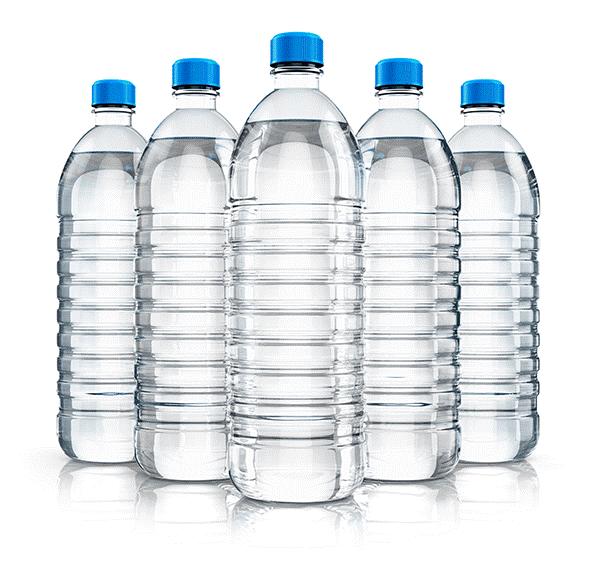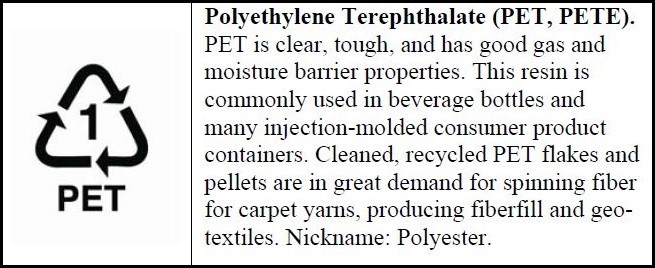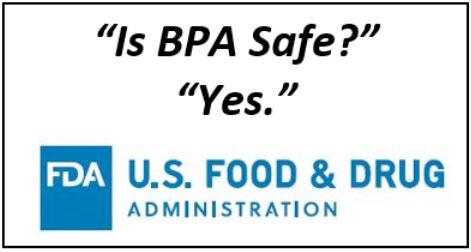There always seems to be a new article on the Internet telling you not to drink from plastic water bottles, listing 2, 5 or even more reasons why. Many of these articles claim BPA in water bottles is a reason not to drink from them. The recommendations in these articles are only good if they’re accurate, and this is where they come up short.
The three simple reasons below are why you can ignore the however many reasons online and continue to drink out of plastic water bottles as much as you want.
1. Plastic water (and soda) bottles do not contain BPA
The top reason most articles cite in avoiding plastic water bottles is that they contain bisphenol A (BPA). The articles usually show a picture of a plastic water bottle.

But BPA isn’t in water bottles like those pictured. They don’t contain BPA now and never did. The truth is, pretty much all plastic water (and soda) bottles are actually made from a plastic called polyethylene terephthalate, also known as PET.PET is not manufactured from BPA and does not contain BPA at all.
PET also doesn’t contain similar substances such as Bisphenol S, which is another commonly-cited reason to not use plastic water bottles.To be sure, you can find the “resin identification code,” on the bottom of the bottle. This code is often in the form of a triangle with the number 1 inside. The number 1 indicates PET, which is usually also spelled out below the triangle.

2. BPA is safe in contact with food and beverages
For those concerned about BPA in plastic water bottles, it should be noted that BPA is most commonly used to make polycarbonate plastic and epoxy resins. Both materials are widely used in products that help make our lives better and safer every day.From substantial scientific research and government review, we know exposure to trace amounts of BPA is safe. On its website, FDA concisely asks and answers the key question on the safety of BPA.

In addition, the CLARITY Core Study, the largest study ever done on BPA, concludes that “BPA produced minimal effects that were distinguishable from background in this study.” These results are consistent with previous studies from the CLARITY program, which indicate that BPA is unlikely to cause health effects at the very low levels to which people are exposed.
In a statement released in conjunction with the report, Dr. Stephen Ostroff, Deputy Commissioner for Foods and Veterinary Medicine at the U.S. Food and Drug Administration (FDA) noted: “our initial review supports our determination that currently authorized uses of BPA continue to be safe for consumers.”
Although FDA’s perspective on the safety of BPA might be the most direct and to the point, many government bodies around the world share that same perspective. Regardless of where you are in the world, you can be sure you are safe from BPA.
3. Plastics used in food and beverage products are safe for use
The FDA regulates all plastics present in products that contact food or beverages to help ensure they are safe for their intended use. These products include food packaging and storage containers, and PET plastic used in water bottles.
The FDA regulations are strictly based on safety considerations and plastics that do not meet FDA safety requirements are not permitted in food-contact products. Similar regulatory systems exist in all major countries worldwide. So there you have it. Plastic water bottles are safe to drink from, but here’s a couple more tips you should know.
Although plastic water bottles do not contain BPA, they may contain potentially harmful bacteria after they are used. Reusing plastic water bottles is okay, but make sure to use soap and hot water to clean them after use, similar to how you would clean cups and dinnerware after eating.
And when you’re finished with the bottle, be sure to toss it in that blue recycle bin – and include the plastic cap. PET bottles are almost universally collected for recycling. That bottle’s got more life to live if we remember to recycle.
